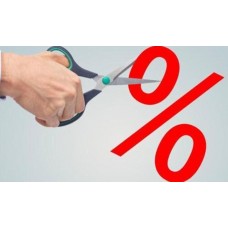Credit Neutral for Corporates initiatives!
Arindam Som, Analyst-India Ratings and Research Pvt Ltd (Ind-Ra) believes the reduction in corporate tax rates is unlikely to materially impact the credit profile of India corporates, although the risk of fiscal slippage is likely to increase significantly.
Ind-Ra’s analysis of the top 1,000 listed corporates by revenue indicates that the total quantum of reduction in tax liability in FY20 is likely to range between INR600 billion and INR650 billion. Of this, 50%-60% of the benefit is likely to accrue to corporates with relatively healthy credit profile marked by low leverage and comfortable interest coverage.
Impact on Corporates to be Credit Neutral: As per Ind-Ra’s estimate, about 54% of the total tax savings are likely to accrue to consumer goods (12.18%), auto (11.10%), oil and gas (10.68%), information technology (9.88%), and metals and mining sectors (9.79%) alone. Within these sectors as well, corporates with a gross leverage of less than 1.50x are likely to account for more than half of the total tax savings. This is primarily on account of significant tax shield created by the high interest outgo of the highly levered corporates.
Ind-Ra’s study indicates that most of the stressed corporates continue to report a relatively low effective tax rate (24.31% in FY18 as per the agency’s estimates), while their tax outgo as a proportion of revenue stood at 1.38% in FY18. Consequently, the impact on the cash flows of the corporates is unlikely to be material in the foreseeable future.
Impact on Consumption Demand: Reduction on tax liability permeates to the broader economic growth primarily in the form of higher payments to factors of production in terms of higher wages, increase in manufacturing activity or investments. As demand continues to be lax and capacity utilisation remains modest, corporates have been reporting pressures on their profitability indicators.
This largely limits the likelihood of the corporates to transmit the benefit of lower tax rates directly in the form of higher expenditure. In the absence of such transmission, household demand by itself is unlikely to meaningfully increase, and therefore the direct impact on economic growth is likely to be limited.
Nonetheless, the indirect impact in the form of higher returns on shareholders’ funds cannot be ignored. The reduced tax rate, especially on new manufacturing facilities, is likely to reduce the payback period for fresh capital expenditures undertaken by corporates in the long run.
Impact on Fiscal Deficit: The government has budgeted fiscal deficit at INR7.04 billion for FY20, which is 3.3% of gross domestic product (GDP). The announcement to slash the corporate tax rate to 22% for domestic companies and 15% for new domestic manufacturing companies and other fiscal reliefs is expected to hit the exchequer to the tune of INR1.45 trillion. Effective tax rate for FY18 (based on 841,687 companies) was 29.49%.
This announcement will certainly impact government finances and push the fiscal deficit higher. Under the ceteris paribus condition and accounting for the INR580 billion (net addition to the exchequer) due to the surplus transferred by the Reserve Bank of India, the agency believes the fiscal deficit could increase to 3.7% of GDP.
However, this is based on the assumption that the nominal rate of growth in FY20 would be 11.0%. Given the 1QFY20 nominal GDP growth slipping to 8.0%, achieving an 11.0% nominal GDP growth in FY20 appears to be difficult. According to Ind-Ra’s projection, the nominal GDP growth is expected to be at 10.6% in FY20, implying the fiscal deficit could rise further to 3.8% of GDP in FY20.
However, the fiscal deficit could be lower than the estimate mentioned above. Lowering tax rates often result in better compliance, leading to higher tax collection. Also, reduction in corporate tax has been a longstanding demand of the corporate sector, which could lead to a significant change in business sentiments, and in turn could result in expansion in business activities/investment, thus helping government garner higher taxes. Another area that the government can look at for garnering higher revenue is disinvestment at which the government has been fairly successful in the past few years. Finally, similar to the previous years, the government may attempt to stay close to the budgeted fiscal deficit number by either cutting capital and/or social sector expenditure.
G-Sec Yields Could Come Under Pressure: Ind-Ra, while analysing the Union Budget FY20, had opined slippage in tax collection due to reduction in corporate tax and sluggish economic growth. Since tax collection slippage is now certain, the government’s borrowing requirements will increase. While, at a macro level it may be a zero sum game with corporations saving on tax pay out and government’s tax collections dropping by an equivalent amount.
The Union Budget envisaged around INR5 trillion government securities (G-Sec) issuances in FY20, of which issuances up to August 2019 stood at INR2.22 trillion. The agency expects reduction in corporate tax rates to increase G-Sec issuances by INR665 billion in 2HFY20. In the agency’s opinion, this could result in upward pressures on the G-Sec yields amid dwindling investor demand in the debt markets.




